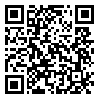1. Hodges H, Fealko C, Soares N. Autism spectrum disorder: definition, epidemiology, causes, and clinical evaluation. Transl Pediatr. 2020;9(S1):S55–65. [
DOI]
2. Cavalli G, Galeoto G, Sogos C, Berardi A, Tofani M. The efficacy of executive function interventions in children with autism spectrum disorder: a systematic review and meta-analysis. Expert Rev Neurother. 2022;22(1):77–84. [
DOI]
3. Alloway T, Lepere A. Sustained attention and working memory in children with autism spectrum disorder. Int J Disabil Dev Educ. 2021;68(1):1–9. [
DOI]
4. Tonizzi I, Giofrè D, Usai MC. Inhibitory control in autism spectrum disorders: meta-analyses on indirect and direct measures. J Autism Dev Disord. 2022;52(11):4949–65. [
DOI]
5. Salimi Z, Jenabi E, Bashirian S. Are social robots ready yet to be used in care and therapy of autism spectrum disorder: A systematic review of randomized controlled trials. Neurosci Biobehav Rev. 2021;129:1–16. [
DOI]
6. DiPietro J, Kelemen A, Liang Y, Sik-Lanyi C. Computer- and robot-assisted therapies to aid social and intellectual functioning of children with autism spectrum disorder. Medicina. 2019;55(8):440. [
DOI]
7. Holeva V, Nikopoulou VA, Papadopoulou M, Vrochidou E, Papakostas GA, Kaburlasos VG. Toward robot-assisted psychosocial intervention for children with autism spectrum disorder (ASD). In: International Conference on Social Robotics [Internet]. Cham: Springer International Publishing; 2019. [
DOI]
8. Taheri A, Meghdari A, Alemi M, Pouretemad H. Impacts of social robots in education and rehabilitation of children with autism in Iran. Journal of Mechanical Engineering. 2020;52(8):2329–54. [Persian] [
Article]
9. Kumazaki H, Yoshikawa Y, Yoshimura Y, Ikeda T, Hasegawa C, Saito DN, et al. The impact of robotic intervention on joint attention in children with autism spectrum disorders. Mol Autism. 2018;9(1):46. [
DOI]
10. Ghiglino D, Chevalier P, Floris F, Priolo T, Wykowska A. Follow the white robot: efficacy of robot-assistive training for children with autism spectrum disorder. Res Autism Spectr Disord. 2021;86:101822. [
DOI]
11. Jegarian M, Bakuoie F, Bahrami M, Pouretemad HR. Human-socially assistive robot interaction for improving joint attention in children with autism. Journal of Mechanical Engineering. 2018 48(3): 29–35. [Persian]
12. Krejcie RV, Morgan DW. Determining sample size for research activities. Educ Psychol Meas. 1970;30(3):607–10. [
DOI]
13. First MB. Structured clinical interview for the DSM (SCID). In: Cautin RL, Lilienfeld SO; editors. The encyclopedia of clinical psychology. First edition. Wiley; 2015. [
DOI]
14. Shabani A, Masoumian S, Zamirinejad S, Hejri M, Pirmorad T, Yaghmaeezadeh H. Psychometric properties of structured clinical interview for DSM‐5 disorders‐clinician version (SCID‐5‐CV). Brain Behav. 2021;11(5):e01894. [
DOI]
15. Schopler E, Reichler RJ, DeVellis RF, Daly K. Toward objective classification of childhood autism: Childhood Autism Rating Scale (CARS). J Autism Dev Disord. 1980;10(1):91–103. [
DOI]
16. Vakilizadeh N, Abedi A, Mohseni Ezhiyeh A. Investigating validity and reliability of early screening for autistic traits-Persian version (ESAT-PV) in toddlers. Archives of Rehabilitation. 2017;18(3):182–93. [Persian] [
Article]
17. Jaeggi SM, Buschkuehl M, Perrig WJ, Meier B. The concurrent validity of the N -back task as a working memory measure. Memory. 2010;18(4):394–412. [
DOI]
18. Klatzky RL, Giudice NA, Marston JR, Tietz J, Golledge RG, Loomis JM. An N-Back Task using vibrotactile stimulation with comparison to an auditory analogue. Behavior Research Methods. 2008;40(1):367–72. [
DOI]
19. Miller KM, Price CC, Okun MS, Montijo H, Bowers D. Is the N-Back task a valid neuropsychological measure for assessing working memory? Arch Clin Neuropsychol. 2009;24(7):711–7. [
DOI]
20. Hossaini Khah K, Nikdel F, Nasser N. the effectiveness of training self-regulation strategies on processing efficiency and working memory function of high school girl students. Research in Cognitive and Behavioral Sciences. 2019;8(2):33–48. [Persian] [
Article]
21. Arble E, Kuentzel J, Barnett D. Convergent validity of the integrated visual and auditory continuous performance test (IVA+Plus): associations with working memory, processing speed, and behavioral ratings. Arch Clin Neuropsychol. 2014;29(3):300–12. [
DOI]
22. Wang LJ, Lee SY, Tsai CS, Lee MJ, Chou MC, Kuo HC, et al. Validity of visual and auditory attention tests for detecting ADHD. J Atten Disord. 2021;25(8):1160–9. [
DOI]
23. Salamati A, Hosseini S A, Haghgou H. Effectiveness of vestibular stimulation on visual attention in children with attention deficit hyperactivity disorder. Archives of Rehabilitation. 2014;15(3):18–25. [Persian] [
Article]
24. Desideri L, Di Santantonio A, Varrucciu N, Bonsi I, Di Sarro R. Assistive technology for cognition to support executive functions in autism: a scoping review. Adv Neurodev Disord. 2020;4(4):330–43. [
DOI]
25. Taheri A, Meghdari A, Alemi M, Pouretemad HR. Teaching music to children with autism: a social robotics challenge. Scientia Iranica. 2019;26(Special Issue on: Socio-Cognitive Engineering):40–58. [Persian] [
DOI]
26. Pasqualotto A, Mazzoni N, Bentenuto A, Mulè A, Benso F, Venuti P. Effects of cognitive training programs on executive function in children and adolescents with autism spectrum disorder: a systematic review. Brain Sci. 2021;11(10):1280. [
DOI]





